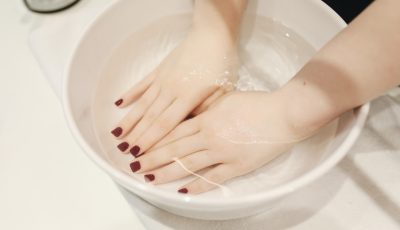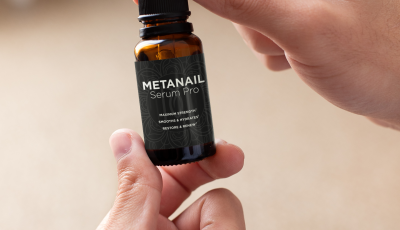In this article, you’ll gain a better understanding of nail bed health and how to take care of it. We’ll explore the importance of maintaining healthy nail beds and the common problems that can occur. You’ll learn practical tips and remedies to keep your nail beds in great shape, as well as when it’s important to seek professional help. By the end of the article, you’ll have all the knowledge you need to ensure the health of your nail beds.

What is a Nail Bed?
Definition and anatomy of the nail bed
The nail bed refers to the area of skin beneath the nail plate, which is responsible for nail growth and maintenance. It is composed of specialized skin cells and blood vessels that support the nail’s structure and health. The nail bed starts at the base of the nail and extends all the way to the free edge.
Functions of the nail bed
The nail bed serves several important functions in maintaining overall nail health. It provides nourishment to the nail plate through a rich supply of blood vessels, ensuring the growth of healthy nails. Additionally, the nail bed helps protect the fingertip by acting as a cushion, reducing the risk of injury. It also aids in sensory perception, allowing you to feel things with greater sensitivity, particularly when it comes to touch.
Common Nail Bed Problems
Nail bed infections
One of the most common issues that can affect the nail bed is an infection. Nail bed infections can occur due to bacteria or fungi entering through a small cut or break in the skin around the nail. Symptoms of a nail bed infection include redness, swelling, pain, and pus formation. It is important to seek prompt medical attention if you suspect a nail bed infection to prevent it from spreading and causing further complications.
Ingrown nails and their impact on the nail bed
Ingrown nails can also cause problems with the nail bed. This occurs when the edge of the nail grows into the surrounding skin, leading to pain, redness, and swelling. If left untreated, ingrown nails can cause infection and damage to the nail bed. It is important to take preventive measures to avoid ingrown nails, such as wearing properly-fitting shoes and trimming the nails straight across.
Nail bed injuries and their consequences
Accidents or trauma to the nail can cause injury to the nail bed. This can result in bleeding, pain, and damage to the nail and surrounding tissues. In severe cases, nail bed injuries may lead to permanent nail deformities or loss. It is crucial to seek medical attention for any nail bed injuries to minimize the risk of complications and ensure proper healing.
Maintaining Nail Bed Health
Proper nail hygiene practices
Maintaining proper nail hygiene is essential in maintaining nail bed health. It is important to keep the nails clean and dry to prevent the growth of bacteria or fungi. Regularly trimming the nails to an appropriate length and shape can also help prevent nail bed issues such as ingrown nails. Additionally, avoiding excessive use of harsh chemicals and nail products can help protect the nail bed from damage.
Preventing nail bed infections
To prevent nail bed infections, it is important to practice good hand hygiene. This includes washing the hands regularly with soap and water, especially after using the restroom or handling objects that may be contaminated. Avoiding nail-biting or picking at the nails can also help reduce the risk of introducing bacteria or fungi into the nail bed.
Treating ingrown nails to protect the nail bed
If you develop an ingrown nail, it is important to seek proper treatment to protect the nail bed. Soaking the affected nail in warm water can help reduce inflammation and soften the skin around the nail. Gently lifting the edge of the ingrown nail with a clean, sterile instrument can provide temporary relief. However, for persistent or severe cases, it is recommended to consult a healthcare professional for appropriate treatment, which may include nail removal or prescription medications.
Nail Bed Disorders and Diseases
Nail psoriasis and its effects on the nail bed
Nail psoriasis is a chronic condition that can affect the nail bed. It is characterized by pitting, discoloration, and thickening of the nails. Nail psoriasis can cause significant discomfort and pain, as well as affect the cosmetic appearance of the nails. Proper management of nail psoriasis involves a comprehensive treatment approach, including topical medications and lifestyle modifications.
Fungal infections and their impact on nail bed health
Fungal infections, such as onychomycosis, can also affect the nail bed. These infections are commonly caused by dermatophytes or yeasts and can lead to thickened, discolored nails with crumbling or brittleness. If left untreated, fungal infections can cause permanent damage to the nail bed. Treatment options for fungal nail infections include oral antifungal medications, topical treatments, and preventive measures to minimize the risk of reinfection.
Role of systemic diseases in nail bed disorders
Certain systemic diseases can manifest in the nails and affect the nail bed. Conditions such as diabetes, peripheral vascular disease, and autoimmune disorders can impact blood circulation and immune function, increasing the susceptibility to nail bed infections and disorders. Proper management of underlying systemic conditions is crucial in preventing and managing nail bed problems associated with these diseases.
Signs of Nail Bed Problems
Color changes in the nail bed
One of the warning signs of nail bed problems is a change in the color of the nail bed. The presence of redness, darkening, or discoloration may indicate an infection or other underlying issue. It is important to pay attention to any abnormal color changes and seek medical advice if they persist or worsen.
Abnormal nail growth patterns
Irregular or abnormal nail growth patterns can be indicative of an underlying problem with the nail bed. This can include nail ridges, brittleness, or thickening of the nails. Monitoring the growth and appearance of your nails can help detect any potential nail bed issues early on.
Pain, swelling, and tenderness in the nail bed
Any pain, swelling, or tenderness in the nail bed should not be ignored, as these symptoms can indicate an infection or injury. If you experience persistent discomfort in the nail bed, it is important to consult a healthcare professional for a proper evaluation and treatment.
Diagnosing Nail Bed Issues
Physical examination of the nail bed
Diagnosing nail bed issues typically involves a thorough physical examination of the affected area. A healthcare professional will assess the color, texture, and shape of the nails and examine the surrounding skin for any signs of infection or injury. They may also inquire about any symptoms or recent changes in nail health.
Use of imaging techniques for nail bed diagnosis
In some cases, imaging techniques such as X-rays or ultrasound may be used to further evaluate the nail bed and surrounding structures. These imaging modalities can help identify any underlying structural deformities or abnormalities that may be contributing to nail bed problems.
Treatment Options for Nail Bed Problems
Medical interventions for nail bed infections
Nail bed infections are typically treated with a combination of oral antibiotics and topical antimicrobial medications. In more severe cases, surgical drainage of any abscesses may be required. It is important to complete the full course of prescribed medications to ensure complete eradication of the infection and prevent recurrence.
Surgical procedures for severe nail bed injuries
Severe nail bed injuries may require surgical intervention to repair the damaged tissues and restore normal nail function. This may involve nail bed repair, nail plate removal, or grafting procedures. Surgical management of nail bed injuries can help prevent long-term complications and promote proper healing.
Topical treatments for nail bed disorders
Topical medications, such as corticosteroids or antifungal creams, can be used to manage certain nail bed disorders. These treatments are typically applied directly to the affected area and may help alleviate symptoms and improve the overall health of the nail bed.
Preventing Nail Bed Problems
Protective measures for the nail bed during daily activities
To prevent nail bed problems, it is important to take protective measures during daily activities. Using gloves when engaging in tasks that may expose the nails to chemicals or trauma can help minimize the risk of injury. Additionally, avoiding repetitive motions that put excessive pressure on the nails can help maintain their health.
Routine nail care to maintain nail bed health
Establishing a regular nail care routine is crucial in maintaining nail bed health. This includes keeping the nails clean and trimmed, moisturizing the cuticles, and avoiding excessive use of nail products that may cause damage. It is also important to avoid excessive filing or buffing of the nails, as this can weaken the nail bed and increase the risk of injury.
Impact of Lifestyle and Habits on Nail Bed Health
Dietary factors affecting nail bed condition
Maintaining a healthy diet is essential for overall nail health, including the nail bed. Nutrient deficiencies, particularly in vitamins A, C, E, and Biotin, can lead to nail bed problems such as brittleness and slow nail growth. Incorporating a well-balanced diet rich in fruits, vegetables, lean proteins, and whole grains can help support nail bed health.
Effects of smoking and alcohol on the nail bed
Smoking and excessive alcohol consumption can have detrimental effects on nail bed health. These habits can reduce blood circulation to the nail bed, impairing its ability to receive proper nourishment and leading to weakened nails. Quitting smoking and reducing alcohol intake can help improve nail bed health and overall well-being.
Importance of stress management for overall nail health
Stress can indirectly impact nail bed health. Chronic stress can weaken the immune system and increase the risk of developing nail bed infections or disorders. Engaging in stress management techniques, such as exercise, meditation, and relaxation exercises, can help reduce stress levels and promote nail bed health.
Conclusion
Understanding and caring for your nail bed health is crucial in maintaining overall nail health. By practicing proper nail hygiene, preventing nail bed infections, and seeking appropriate medical attention when needed, you can prevent and address nail bed problems effectively. Pay attention to any signs of nail bed issues, such as color changes, abnormal nail growth, or pain and swelling, as early detection and treatment can lead to better outcomes. Remember to prioritize your nail bed health, take necessary precautions, and consult with a healthcare professional for any concerns or issues regarding your nails.





